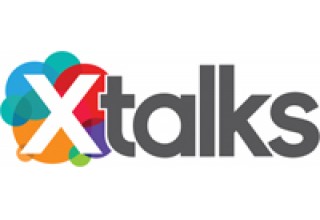Cannabinoid Abuse Potential Assessment: The 8-Factor Analysis as an Opportunity, New Webinar Hosted by Xtalks

TORONTO, February 22, 2018 (Newswire.com) - Join the live session of Xtalks' newest webinar, "Cannabinoid Abuse Potential Assessment: The 8-Factor Analysis as an Opportunity," on Thursday, March 15, 2018, at 12:30 p.m. EDT (4:30 p.m. GMT), with industry experts Dr. Jack Henningfield, Vice President of Research, Health Policy, and Abuse Liability and Dr. Reginald Fant, Director of Clinical Pharmacology and Abuse Potential Assessment, both from PinneyAssociates.
The development of novel pharmaceuticals whose pharmacology is dependent on cannabinoid receptors is an increasingly active area of research and development. However, the confusing and conflicting legal status of cannabis and its active constituents can inhibit development, as companies encounter significant and unique barriers to approval and appropriate scheduling. Experiences with development and regulatory submission of other CNS-active drugs, including the development of the required abuse potential assessment, provide important precedents and models for cannabinoids.
Cannabis is not approved for therapeutic purposes by the FDA. As such, it remains listed as a Schedule I drug, which is the only schedule permitted by the Controlled Substances Act (CSA) for drugs considered to be of high dependence potential. Placement in Schedule I does not prevent research for therapeutic potential but it raises unique and burdensome requirements. Typically, all FDA-approved drug products with the same active entity are placed in the same schedule; however, cannabinoid-based products are among the few exceptions with products placed in either the highly restrictive Schedule II (Syndros, Cesamet) and others in Schedule III (Marinol). For therapeutic drugs, CSA Schedule placement is related to abuse and other safety risks so that those posing the highest risks are placed in Schedule II and the lowest risks in Schedule V. In principle, a cannabinoid formulation that was determined to carry less risk still might be placed in Schedule IV like benzodiazepine-based anti-anxiety drugs, while Schedule V seems unlikely for reasons that will be discussed.
Key topics
- The therapeutic potential for cannabinoids
- The U.S. Controlled Substances Act and the Final FDA Guidance to Industry on Assessment of Abuse Potential of Drugs
- The role of abuse potential assessment and the 8-factor analysis in drug scheduling and control
- The abuse potential of cannabis and its constituents including THC, CBD, and other terpenes
- Studies to assess abuse potential of cannabinoid products during the development cycle
- How to leverage assessment results to support appropriate scheduling and patient access
For more information about this complimentary webinar, visit Cannabinoid Abuse Potential Assessment: The 8-Factor Analysis as an Opportunity.
ABOUT XTALKS
Xtalks, powered by Honeycomb Worldwide Inc., is a leading provider of educational webinars to the global Life Sciences community. Every year thousands of industry practitioners (from pharmaceutical and biotech companies, private and academic research institutions, healthcare centers, etc.) turn to Xtalks for access to quality content. Xtalks helps Life Science professionals stay current with industry developments, trends and regulations. Xtalks webinars also provide perspectives on key issues from top industry thought leaders and service providers.
To learn more about Xtalks, visit http://xtalks.com.
For information about hosting a webinar, visit http://xtalks.com/sponsorship.ashx.
Contact:
Nima Rajan
Tel: +1 (416) 977-6555 ext 352
Email: nrajan@xtalks.com
Source: Xtalks

